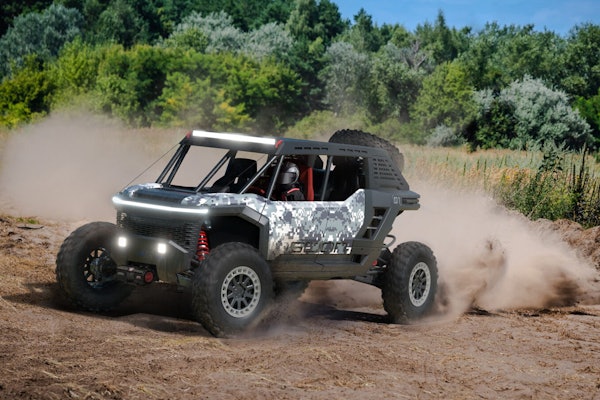
If your clients have roses in their landscape and they’re suddenly looking deformed, they could be suffering from Rose Rosette Disease (RRD), an incurable disease spread by microscopic eriophyid mites. This disease is becoming increasingly prevalent and knowing how to spot it is important.
According to Proven Winners, RRD causes roses to grow strangely deformed stems, leaves, and flowers. Although the disease is a virus, it is transmitted by a mite that is so small, it can only be seen under a powerful microscope.
Knowing the signs of an infected plant is key to a proper diagnosis. According to Proven Winners, there are several symptoms to look for in roses potentially infected by RRD.
1. Bright red new growth that does not turn green.
2. Excessive thorniness and thick stems.
3. Buds that emerge in tight and small clusters (the “rosettes” giving this disease its name)
4. Flowers that have opened but are deformed.
5. Deformed and/or yellowing foliage
Where is RRD found?
While you might be hearing more about RRD these days, it’s not exactly new. The disease was first reported in 1941 in California and Wyoming. But it has been spreading from there and continues to make news as it enters new states.
Jack Moore, owner of Grassperson in Lewisville, Texas, says he’s been seeing more of this disease in his area. He has seen it hitting Knock Out Roses—a client favorite—particularly hard.
While traditional roses need very attentive TLC, Knock Out Roses have been known for being hardy and low maintenance. But now that they’re subject to this disease, that’s changing.
Still, Moore says that some of his clients who really love Knock Out Roses have still wanted them installed.
“It boils down to expectations and making sure clients are properly educated,” Moore says. “Those who choose to still have Knock Out Roses must understand that in a couple years they may need to be replaced due to RRD. One of the things that we’ve found is that it’s a slow decline—not overnight—so clients do get to enjoy their rose bush for a couple of years.”
Moore says that he’s also seeing new rose cultivars regularly pop up. One of the newest is Top Gun, which seem to be resistant to RRD.
Educating clients
While RRD is one of the most serious issues a rose bush can face (due to there being no cure), it’s certainly not the only potential downfall. Rose bushes are susceptible to a number of problems and certain cultivars, which are more fragile, need a lot of care just to survive. Even pruning a rose bush improperly can lead to its demise.
That’s why it’s important to educate clients who either already have rose bushes or are thinking about having them installed. Many clients may not be familiar with RRD and as a landscape professional, you can provide a great service by informing them.









